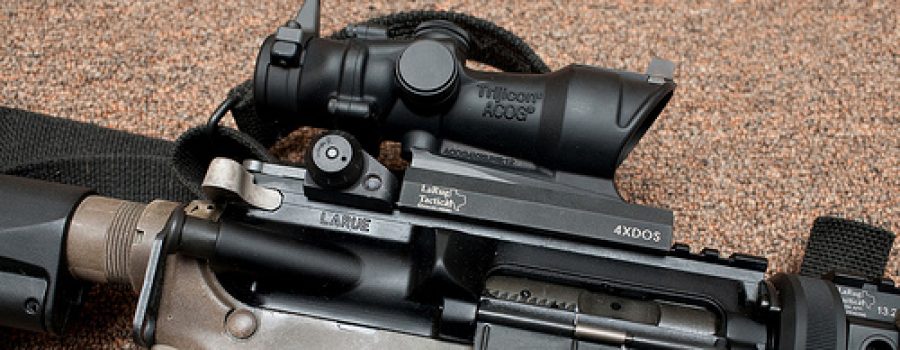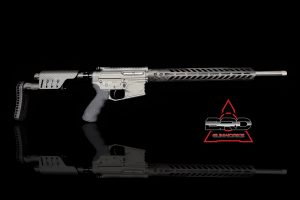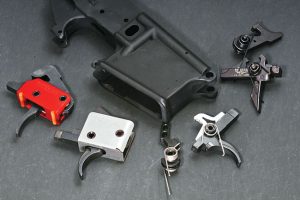Upon going through some AR platform firearms in the gun safe I came across one that has an ACOG mounted on it, and I thought that an article on basic maintenance would be a good idea. The Trijicon Advanced Combat Optical Gunsight (ACOG) is a durable and trustworthy optic that has been in service since 1987. However, there are a couple of ways to ensure that this piece of equipment is kept working to standard.

The Mount
Often times the ACOG will be mounted with a TA51 mount to a 1913 Picatinny rail of the upper receiver and parts of the mount need to be tight. The base of the ACOG is critical for ensuring the optic stays tight inside the housing. If loose, the optic will move forward and back during operation. It is especially critical to check for looseness if mounted on a heavier recoiling firearm. My common practice is to apply a drop of blue Loctite to the two base screws and use a screwdriver to tighten until snug.

The front of the base should be in line with the front of the locking interface. To properly secure the interface to the rail, ensure that the locking studs are actually in a rail slot and that the interface clamp is not tilted but securely laying on the edge of the rail. It is possible to mount it with the locking bar sideways. While applying forward pressure on the optic, tighten to finger pressure only, then use a screwdriver to tighten a quarter of a turn more. Do not overtighten. If your optic is not maintaining a zero, a loose mount and proper mounting is the first thing to check. Verify both housing screws and locking knobs are tightened properly.
Return to Zero
Although the TA51 mount does not have a return to zero knob, there are ways around that to ensure the ACOG is mounted back to the previous zero set, or as close to it as possible. Assuming that the ACOG was properly mounted prior to removal. After achieving a proper zero, use a paint pen to mark which rail slot the optic is in and mark the locking screws and interface. Upon reinstallation this will allow you to tighten the optic back on to the same tightness after returning it to the correct slot. Of course, zero should always be verified. Should you need to readjust your zero, do not force the reticle adjusters. If something is wrong with the scope, applying too much force on the adjusters can harm the internal prism assembly. For further instructions, you should contact the manufacturer.
Fiber Optic Light Collector
The fiber optic light collector on top of the ACOG is filled with tritium that collects ambient light, thus allowing the reticle to be brighter. Many times during daylight hours I have found the requirement of putting tape over the light collector to dim the brightness. This allows for a crisper reticle. However, doing this can cause damage to the glass from the tape residue. If you want to dim the reticle and prevent blooming, put a piece of paper under the tape to keep any residue off the glass. Do not attempt to scrape anything off of the glass. If the light collector is damaged it could allow tritium to leak which is very dangerous as tritium is a radioactive isotope. It also deadlines the ACOG if the collector is so badly damaged that it no longer collects light. To check for operation, go into a dark room and see if the reticle is still illuminated. The tritium has a life span of 10 to 15 years.

The Lenses
The Trijicon LensPen which comes with your ACOG, or similar, should be used to remove any dirt from the lens. Use the brush side for this. When clear of all dirt or other material, use the felt side to finish with the lens cleaning.

Operator Inspection
These few easy inspections and maintenance techniques will ensure that your equipment remains in service for as long as possible and can be done by all levels of experience. You are responsible for your pieces of equipment and good practices like these will ensure that no negligence is found. If you have a defect you should contact Trijicon’s customer service.
BRD Gun Works~ Performance you can afford when you can’t afford failure



